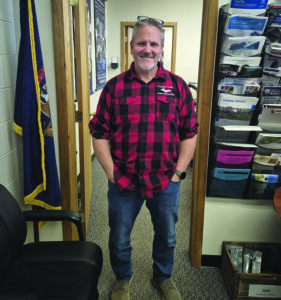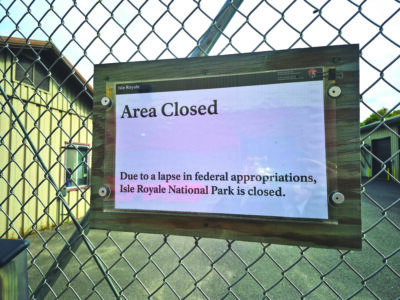Funding in jeopardy
$50M budget appropriation for Wakefield Township may be cut

Site of Highland Copper Company’s Copperwood Mine Project, near Wakefield, in Gogebic County. (Courtesy of Highland Copper Company)
WAKEFIELD TOWNSHIP – A proposed $50 million inclusion in the 2026 state budget for Wakefield Township was likely to be excluded when the Michigan legislature voted Thursday.
Rep. Greg Markkanen, R-Hancock, first put in the request in April. It was among nearly 800 earmark requests seeking $3.3 billion in the 2026 budget.
The House of Representatives Appropriations Requests for Legislatively Directed Spending Items regarding the Wakefield infrastructure investment states the request will permit Wakefield Township to invest in:
• Road upgrades: County Road 519 will be improved for all-season use, bolstering the area’s existing industry and local tourism.
• Power grid fortification: A connection from the substation south of Ironwood across western Gogebic County will increase regional capacity and reliability for the residents of City of Ironwood, City of Bessemer, City of Wakefield, Erwin Township, Charter Township of Ironwood, Bessemer Township, and Wakefield Township.
• Telecommunications improvements: expanded and enhanced access will improve cell, data, and broadband service regionally.
Bridge Detroit reported on Aug. 27 But its budget proposal would include $50 million for Wakefield Township to make infrastructure improvements for what Bridge Detroit called a controversial Upper Peninsula Copper mine (Copperwood).
On Wednesday, Bridge Michigan reported Rep. Carrie Rheingans, an Ann Arbor Democrat, said on social media that she had been told the Copperwood mine funding will “NOT” be in the final budget bills, which lawmakers have not yet seen. But Republican Sen. Ed McBroom, who supports the Copperwood Project, told Bridge in a text message that the budget is far from a done deal.
While the Copperwood Mine would benefit from the $50 million, largely through the upgrade to County Road 519 and the power grid fortification, in April, Marty Fittante, CEO of InvestUP, sent a letter to Speaker Matt Hall and Appropriations Chair Ann Bollin, in which he expressed Gogebic County’s need of the appropriation.
Gogebic County has lost nearly 70% of its K-12 population. Additionally, of all 15 UP counties, Gogebic County ranks the highest in poverty rates with 29% of households in poverty, the letter says. When combining ALICE and poverty rates, the county sees astounding 52% households living in poverty. The county significantly lags behind in median household income at $47,913 (2022), while the state median income is at $68,505.
“Further, when comparing median house values, Gogebic County rounds out at the very bottom of all UP counties at $87,800.,” Fittante wrote. “In addition, homes in border counties (Gogebic County shares a border with the State of Wisconsin) of Vilas and Iron in Wisconsin are valued over $255,000 and $144,000 respectively.”
To further emphasize the county’s need for economic development, Fittante continued, over the past decade, job postings are down 5% when postings across the Upper Peninsula and the State of Michigan are trending up. In addition, the living hourly wage threshold for Gogebic County is $22.70 (2022); this is the minimum living wage for 2 adults working full time with two children in the household. At the same time, average advertised wages in job postings in the Western UP are below $18 an hour. In the UP, only Ontonagon and Baraga have lower living hourly wages at $22.59 and $21.82 respectively.
“The circumstances are equally dire in Ontonagon County, which shares a border with Gogebic County.
Ontonagon will also see tremendous economic benefit from economic development opportunities of
significance in Wakefield Township,” Fittante stated in his letter. “Ontonagon has lost nearly 80% of their student population, have the state’s oldest average age, and see one in two households earn less than the minimum cost necessary to live and work. In fact, Ontonagon recently saw its hospital close – and, as you know, without a hospital, you don’t have a community.”




